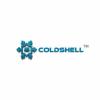Residential vs. Commercial Roofing Maintenance Considerations

Regular maintenance is key to extending the lifespan of any roof, whether on a home or a commercial building. However, residential and commercial roofs often differ significantly, which means their maintenance needs are also quite distinct. Understanding these differences allows property owners and facility managers to make informed decisions that will preserve their investment.
Key Differences Between Residential and Commercial Roofs:
Roofing systems are not one-size-fits-all. The materials, structures, and purposes of residential and commercial roofs play a significant role in determining their maintenance needs.
Structural Differences
Residential Roofs
- Typically feature pitched or sloped designs, making them ideal for shedding water and snow.
- Often constructed using materials like asphalt shingles, clay tiles, or wood, depending on regional preferences and climate.
- Smaller surface areas and simpler designs make residential roofs relatively straightforward to maintain.
Commercial Roofs
- Predominantly flat or with minimal slope to maximize usable interior space and allow for items such as HVAC units.
- Frequently built with materials like EPDM (rubber roofing), TPO (thermoplastic polyolefin), or metal.
- Larger surface areas and complex structural requirements make commercial roofs more challenging to inspect and repair.
Usage and Exposure
Residential Roofs
- Designed to protect against standard household environmental factors like rain, wind, and sun exposure.
- Generally face less traffic since walking on residential roofs is uncommon outside of maintenance checks.
Commercial Roofs
- Often subjected to heavier load-bearing activities due to foot traffic, HVAC units, and other equipment.
- Vulnerable to varied impacts, from leaks caused by equipment vibrations to heat degradation due to reflective surfaces.
Maintenance Considerations for Residential Roofs:
Residential roofs may seem simpler, but they still require consistent care to avoid costly repairs.
Schedule Regular Inspections
Homeowners should schedule annual inspections, especially after significant weather events such as storms or heavy snowfall. Inspections can help identify loose shingles, clogged gutters, or early signs of water damage.
Address Repairs Promptly
Issues such as damaged shingles or leaks should be addressed immediately by professional roofing contractors. Ignoring small problems can lead to larger, more expensive repairs later on.
Clean Gutters and Downspouts
Clogged gutters can create water backup, leading to roof rot and leaks. Regular gutter maintenance is an essential part of roof care.
Control Moss and Algae Growth
Homes in humid or shaded environments may experience moss and algae growth, which can compromise shingles. Applying moss control products can help preserve the roof’s integrity.
Use Quality Materials
When repairs are necessary, invest in high-quality, durable materials that match the existing roof. This ensures maximum compatibility and reduces the chances of future issues.
Maintenance Considerations for Commercial Roofs:
Commercial roofs demand a different approach to maintenance due to their size, material composition, and functional use.
Conduct Biannual Inspections
Since commercial roofs often face more wear and tear, inspections should occur at least twice a year, focusing on areas around HVAC units, drains, and flashings.
Prioritize Preventative Maintenance
Develop a maintenance plan that includes cleaning drains, sealing seams, and reinforcing areas prone to stress. Preventative measures can save significant costs down the line.
Manage Foot Traffic
Install designated walkways on flat commercial roofs to protect the membrane from damage caused by footsteps. This is especially important for buildings housing heavy equipment.
Address Ponding Water
Flat roofs can be prone to water pooling, which can cause leaks and structural damage. Make sure proper drainage systems are in place, and remove standing water promptly.
Consider Roof Coatings
Applying a high-quality roof coating can be a proactive step in safeguarding your roof from water-related issues. These coatings create an additional layer of protection, enhancing resistance against leaks and potential structural damage caused by water pooling. Consulting with a professional roofing service like Everest Systems can help determine the best commercial roof coating solution for your specific needs and extend the lifespan of your roof.
Work with Professional Roofing Contractors
Commercial roof maintenance often requires specialized tools and expertise. Partnering with a qualified roofing contractor who understands commercial systems can make a substantial difference.
Shared Maintenance Practices for Both Roof Types:
Despite their differences, residential and commercial roofs share some maintenance principles.
Stay Proactive
Routine inspections and timely repairs apply to both residential and commercial roofs. Waiting until there’s visible damage often leads to higher costs.
Avoid DIY Fixes
DIY repairs can seem tempting, but they often result in incomplete fixes or accidental damage. Certified professionals deliver better outcomes and prolong the life of the roof.
Maintain Proper Ventilation
Both roof types benefit from appropriate ventilation. Adequate airflow prevents moisture buildup, which could otherwise lead to mold, rot, or ice dams.
Monitor Weather Conditions
Regularly check your roof after extreme weather events. Whether it’s a hurricane or hailstorm, prompt action can mitigate damage and prevent it from worsening.
Maintaining your roof can seem daunting, but with careful attention and the right plan, it becomes manageable. Whether you care for a residential or commercial roof, understanding and addressing its unique needs will safeguard your property for years to come. Don’t wait for issues to arise—start planning your roof's maintenance today. Consult with a professional roofing service to schedule an inspection and create a tailored maintenance approach that fits your roof’s type and requirements.
Post Your Ad Here

Comments